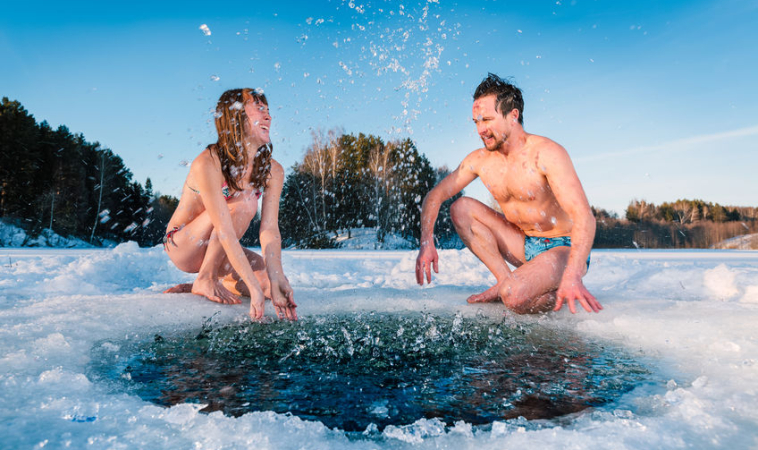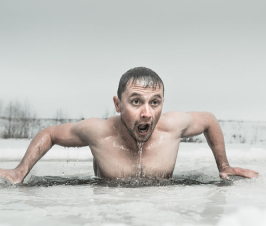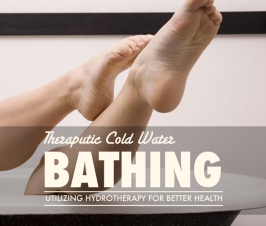The Multifaceted Faucet
Last week, I posted a short article advocating the use of cold water immersion for the use in decreasing recovery time after exercise. I thought that this week, and perhaps in the weeks to come, we could start looking at some of the different aspects of using different temperature water for therapeutic purposes. Hot water is often used for pain management, and soothing sore muscles, and so is cold water (or ice). How does this work, and what are the underlying principles which help us decide when to use cold versus hot water, and most importantly, how long to use each application. This latter point is of crucial importance and I’ll reiterate it –
the duration of the application of hot or cold is far more important than the temperature of the water.
Cold Water
Cold water is stimulating to the body in the short term. For about 1 minute. It causes an immediate vasoconstrictive effect, and then a reactive dilation of the blood vessels, as the body attempts to heat itself from the initial burst of cold. Now, if the cold application is kept on for more than about a minute, the reactive compensation is overpowered by the constant cold temperature and vasoconstriction of all peripheral blood vessels being affected occurs as blood is shunted further into the body. This is why if you leave an ice pack on for more than about a minute you go numb.
So, we have two lengths of time we can use for cold – about a minute, which elicits a reactive vasodilation. This is the effect we want when we are attempting to increase our muscle recovery time after exercise, and also when we are attempting to tonify our body in other ways. The “short” cold application can INCREASE oxygen absorption, carbon dioxide excretion, nitrogen absorption and excretion, tissue tone, peripheral white blood cell count (immune function), peripheral red blood cell count, and DECREASE blood glucose.
From this list of physiological functions of cold water we can see that short cold water applications can potentially benefit us in a lot of ways, such as fighting off infection, maintaining a balanced metabolism, and keeping our blood sugar regulated.
Hot Water
A hot water application, such as a hot shower, or hot water bottle will stimulate for the first 5 minutes or so. This stimulation is the direct action of the heat dilating blood vessels, but after about 5 minutes, the simulation turns into stasis, and blood can actually start to pool in the extremities. Long applications of heat tend to depress the circulation, which is why we feel extremely relaxed after a long hot bath. This is why it’s often advocated to end a hot application with a short rinse of cold water, to get the circulation moving again.
A hot water application DECREASES tissue tone, peripheral white and red blood cell counts, and INCREASES blood glucose.
 Node Smith, associate editor for NDNR, is a fifth year naturopathic medical student at NUNM, where he has been instrumental in maintaining a firm connection to the philosophy and heritage of naturopathic medicine amongst the next generation of docs. He helped found the first multi-generational experiential retreat, which brings elders, alumni, and students together for a weekend campout where naturopathic medicine and medical philosophy are experienced in nature. Three years ago he helped found the non-profit, Association for Naturopathic ReVitalization (ANR), for which he serves as the board chairman. ANR has a mission to inspire health practitioners to embody the naturopathic principles through experiential education. Node also has a firm belief that the next era of naturopathic medicine will see a resurgence of in-patient facilities which use fasting, earthing, hydrotherapy and homeopathy to bring people back from chronic diseases of modern living; he is involved in numerous conversations and projects to bring about this vision.
Node Smith, associate editor for NDNR, is a fifth year naturopathic medical student at NUNM, where he has been instrumental in maintaining a firm connection to the philosophy and heritage of naturopathic medicine amongst the next generation of docs. He helped found the first multi-generational experiential retreat, which brings elders, alumni, and students together for a weekend campout where naturopathic medicine and medical philosophy are experienced in nature. Three years ago he helped found the non-profit, Association for Naturopathic ReVitalization (ANR), for which he serves as the board chairman. ANR has a mission to inspire health practitioners to embody the naturopathic principles through experiential education. Node also has a firm belief that the next era of naturopathic medicine will see a resurgence of in-patient facilities which use fasting, earthing, hydrotherapy and homeopathy to bring people back from chronic diseases of modern living; he is involved in numerous conversations and projects to bring about this vision.
















